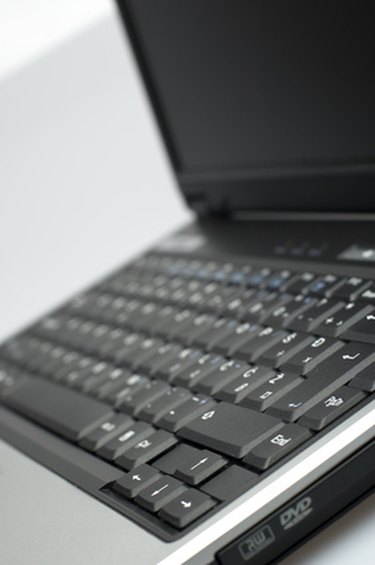
Every laptop, whether a PC, Mac or Unix/Linux machine, goes through what is called "booting." When first started, the laptop goes through a series of tests to ensure that its hardware is operational. Additionally, information specific to the operating system is loaded, with the end result being a computer that is ready for use. On occasion a laptop might get stuck in a booting loop, where during boot-up it starts over without completing the entire process. There are a number of reasons why this may occur.
Step 1
Check to see if there are any keys stuck/depressed. If so, use a paperclip and fit it underneath the key and gently pry the end that is stuck. Make sure the laptop is off before attempting this.
Video of the Day
Step 2
Observe where the boot process ends and starts over. In most cases, this will give an indication where the problem occurs. If the laptop reboots early on in the process, for example when it is detecting the hard drive, chances are good it is a hardware issue. If the reboot occurs further along in the process, like when it is loading operating system files, there may be an issue with operating system software.
Step 3
Boot in safe mode or the operating system equivalent. Windows, Unix/Linux and Mac operating systems have a mode that will load the minimum software needed to boot. This is a standard approach in troubleshooting, as it only supports the minimum hardware needed to complete the boot into the operating system. Once you are logged into the computer, device drivers can be updated, software removed and so forth.
To boot into safe mode in Windows, hit the "F8" key when the computer first starts up to get a submenu. From there select a boot option. Many choose "Safe mode with command prompt" as this will go line by line through the boot process, allowing you to isolate where the problem might be.
To boot into a different run level in Unix/Linux, it depends on the version of Unix/Linux, but most have the option of a "recovery mode." During boot hit the "Esc" or "E" key and select the mode appropriate such as "drop to root shell," etc. If you have the ability to get into command shell, enter into run level 1 (single user mode) by typing in "init 1."
To start in safe boot on a Macintosh laptop, hold the "Shift" key as it boots up. This forces a disk check and loads minimal software in efforts to complete the boot process, much like the other operating system's "safe modes."
Step 4
Check to see if your laptop is overheating. Laptops have a greater likelihood of overheating than desktops. Either touch the laptop or download an application such as MobileMeter to check laptop temperature. If it is running hot, try using canned air to clear out of vents, etc. Also, elevating the laptop off of its resting surface allows greater airflow in and out of the laptop.
Video of the Day